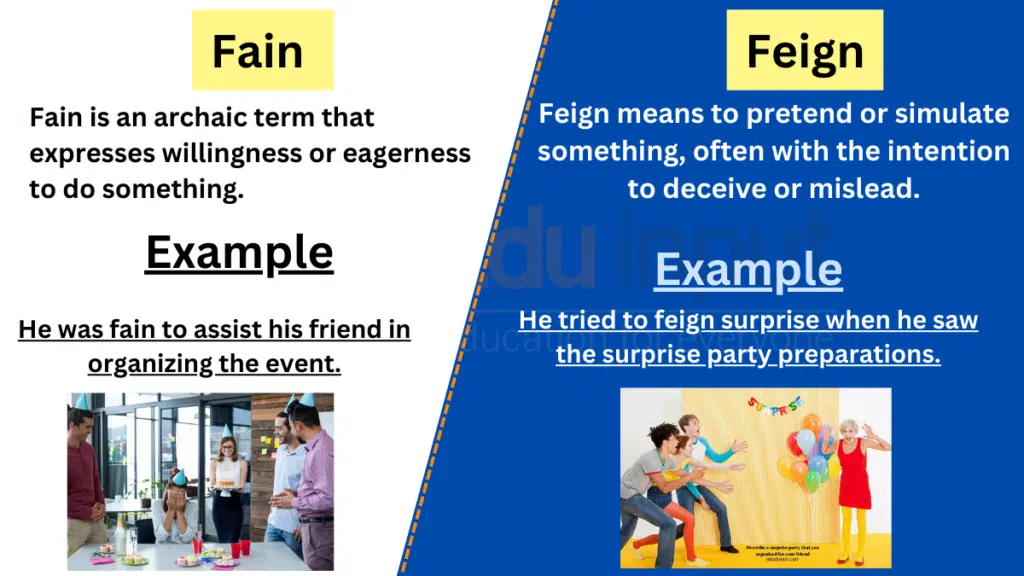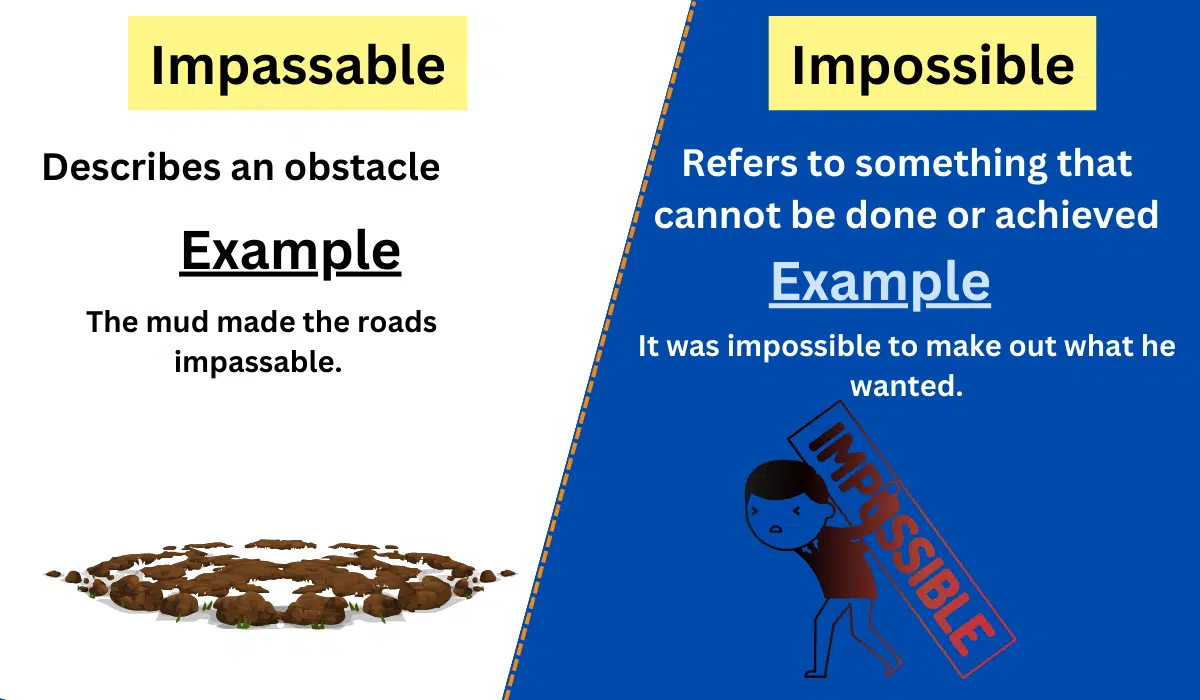Fain vs. Feign-Difference between and Examples
The words “fain” and “feign” may sound similar, but they have distinct meanings and usage. Understanding the nuances between these terms is essential for effective communication and precise expression. This article aims to clarify the differences between “fain” and “feign” through detailed definitions, illustrative examples, and practical insights. By discerning their unique connotations, we can accurately convey our thoughts and intentions, ensuring clarity in our communication.

Meanings and Examples
Fain meaning
The meaning of Fain is an archaic term that expresses willingness or eagerness to do something.
Fain Examples
a) He was fain to assist his friend in organizing the event.
b) She was fain to express her gratitude for the help she received.
c) They were fain to join the team and contribute their skills.
Feign meaning
Feign means to pretend or simulate something, often with the intention to deceive or mislead.
Feign Examples
a) He tried to feign surprise when he saw the surprise party preparations.
b) She feigned illness to avoid attending the meeting.
c) The actor had to feign happiness despite personal troubles.
Difference between Fain and Feign
| Fain | Feign | |
| Meaning | Willing or eager to do something | Pretend or simulate, often with deceitful intent |
| Example | “He was fain to assist his friend.” | “He tried to feign surprise.” |
| Usage | Expressing willingness or eagerness | Pretending or simulating |
| Connotation | Positive, expressing willingness or eagerness | Negative, indicating deceit or pretense |
Usage in a Paragraph
Upon receiving the news of his friend’s success, John was fain to celebrate the achievement. He eagerly congratulated his friend and offered his support for future endeavors. However, doubts arose when some began to suspect that John’s enthusiastic response was merely an attempt to feign happiness. They noticed subtle signs of insincerity in his tone and gestures. Despite the initial excitement, John’s feigned enthusiasm failed to convince those around him, and his true feelings of envy soon became apparent.
Distinguishing between “fain” and “feign” enables us to communicate with precision and clarity. “Fain” signifies willingness or eagerness, expressing a positive connotation. On the other hand, “feign” involves pretending or simulating something, often with deceitful intent, carrying a negative connotation. By using these words appropriately, we can accurately convey our intentions and feelings, ensuring effective communication. Understanding the distinctions between “fain” and “feign” allows us to navigate language nuances and express ourselves more authentically.






Leave a Reply